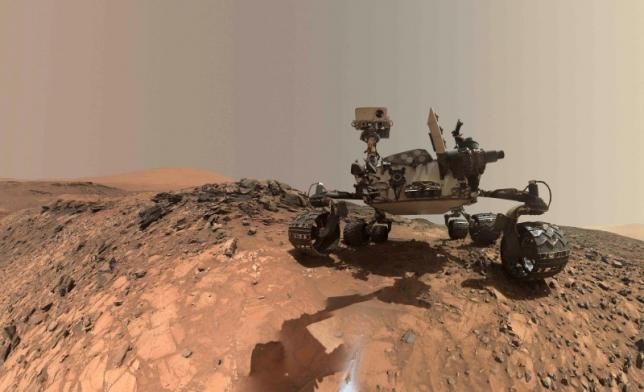NASA recently announced their latest discovery regarding Mars, which was made possible by the help of Curiosity rover. Though there is still no sign of alien or the so-called Martians life form, still this unprecedented discovery may soon explain the elusive history and evolution of the Red Planet.
NASA's Mars rover managed to discover a type of silica mineral that are found mostly the extremely hot volcanoes here on earth. Thanks to the X-ray diffraction instrument found in Science Laboratory rover Curiosity, it helped scientist detect and identify a significant amount of tridymite, a mineral generally associated with silicic volcanism.
Though this mineral may be insignificant here on earth, but finding tridymite mineral on the surface of the Red Planet, somehow suggest that the planet once had explosive volcanoes, which led to the presence of such minerals.
"On Earth, tridymite is formed at high temperatures in an explosive process called silicic volcanism." NASA quoted planetary scientist Richard Morris, as saying. "Mount St. Helens, the active volcano in Washington State, and the Satsuma-Iwojima volcano in Japan are examples of such volcanoes. The combination of high silica content and extremely high temperatures in the volcanoes creates tridymite. The tridymite was incorporated into 'Lake Gale' mudstone at Buckskin as sediment from erosion of silicic volcanic rocks."
The discovery of the mineral tridymite in the area of Mars named "Buckskin" may affect earth and how it sees the formation of such mineral. This new finding will surely stimulate scientists to re-examine other ways that tridymite may be formed.
Apart from that possible repercussion, the discovery may somehow shed some light on how this planet that is alien to humanity came to be as it is now. For tridymite may change how scientists view the evolution of Mars, including the potential very violent and explosive volcanic history capable of leaving significant traces of the said mineral. Thus, ultimately changing the views of experts regarding the Red Planet as compared to what was previously thought of it, according to RedOrbit.
Since the landing of NASA's Mars Science Laboratory rover on the surface of the planet next to Earth last 2012, discoveries and footages were sent. However, the elusive sign of civilization and previous life form has yet to reveal itself the human race, thus authenticating man's imagination of Martians.
Watch here below Curiosity Rover Video of 2016:



























